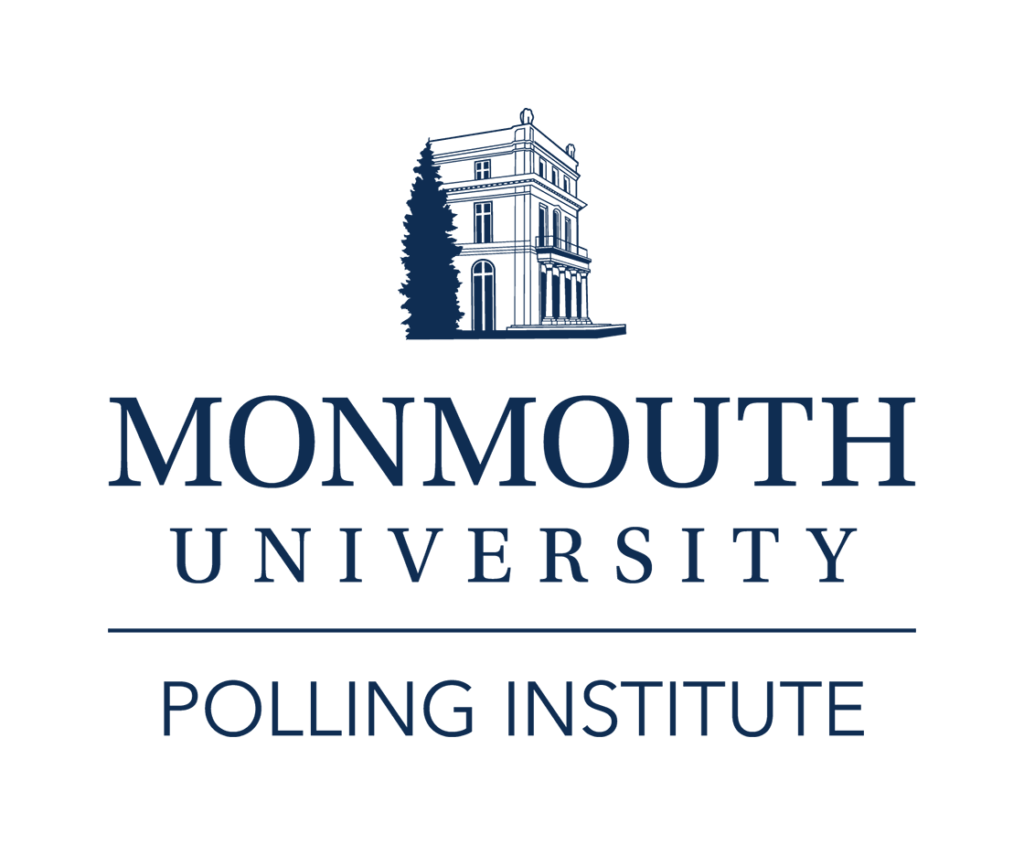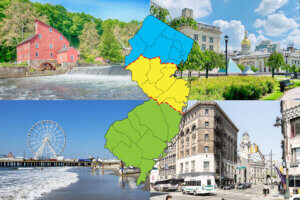What is New Jersey’s quality of life? According to a unique Monmouth University Poll of state residents, it is generally positive, but it could be better. Perhaps the most basic measure of New Jersey’s quality of life is the overall view of the state as a place to live. Currently, 17% rate it as excellent and 46% say it is a good place to live. The combined 63% who say the state is at least a good place to live may represent a clear majority of residents, but it is also the lowest positive reading in 30 years of polling on this question. The highest reading on this metric was 84% in 1987.
Residents generally agree more on what’s wrong with the Garden State than what’s right with it. When asked to name what they like most about living here, more than 1-in-10 cite the state’s proximity to the shore (14%) and to major cities such as New York (15%), with other responses ranging from the seasons and climate (6%), to the presence of friends and family (5%), job opportunities (4%), access to education (3%), shopping (2%), and more. When asked to name what they dislike most about the state, though, there is much more consensus, with taxes (46%) being the primary culprit.
While ratings of the state have fluctuated over the past three decades, Garden State residents have held fairly stable opinions of their hometowns. Currently, 73% say their own town or city is an excellent or good place to live. This is basically identical to other poll results over the past decade as well as in the mid 1980s to the mid 1990s, and slightly higher than in the early 1980s (67%) and late 1970s (66%).
New Jerseyans gave similar ratings to both their state and hometown in the 1990s and early 2000s. During the mid to late 1980s, ratings of New Jersey as a state were actually higher than ratings of one’s own town. However, the current survey is the first time in more than 30 years when significantly fewer residents have a positive opinion of their state (63%) than do of their hometown (73%).
These are just some of the results from a comprehensive survey assessing the Garden State’s Quality of Life conducted by the Monmouth University Polling Institute. The survey posed more than 100 question items covering a dozen facets of life quality to a scientific sample of 2,864 New Jerseyans. Many of the metrics included in this survey have time series data going back to the 1980s, with some going as far back as the early 1970s.
“According to the state’s own residents, the Garden State’s current quality of life is not the worst it’s been, but it could be better,” said Patrick Murray, director of the Monmouth University Polling Institute. “New Jerseyans are now making a qualitative distinction between life in their own town and the state as a whole, even while they report having less time to socialize with their neighbors. Compared to prior decades, people feel safer in the state and give higher marks to the natural environment. However, personal finances are shaky and trust in government is at an all-time low. All of these factors jointly contribute to New Jersey’s quality of life.”
A key objective of this project is to provide stakeholders with an easy to track metric on quality of life. To that end, the Monmouth University Polling Institute has created a Garden State Quality of Life Index. The index is based on five items from the survey: overall opinion of the state as a place to live – which contributes half the index score – and ratings of one’s hometown, the performance of local schools, the quality of the local environment, and feelings of safety in one’s own neighborhood. The index can potentially range from -100 to +100.
The initial Garden State Quality of Life Index stands at +21. That means, for the state as a whole, quality of life is more positive than negative, but only slightly more so. Future reports will go into more depth on the index score for various groups of New Jerseyans and this index will be tracked on a quarterly basis.
Other results from the initial Garden State Quality of Life Survey include:
- Economic Factors : Currently, 76% are satisfied with their standard of living. This is down just slightly from readings in the early 2000s, but somewhat higher than polls taken in the early 1990s.
- Quality of Government : Views on the quality of government have grown increasingly negative over the past 10 years. Currently, just 24% say New Jersey state government is excellent or good. The last time state government ratings were in net positive territory was 2001 at 54% excellent/good. Since that time, negative ratings have steadily increased a few points each year. Currently, 44% of residents say they do not have much confidence in Trenton. That marks the highest negative reading on this question in polls going back to 1974. The current reading surpasses the prior highest negative point of 42% in 1976.
- Education : Ratings of New Jersey’s public school system have been generally positive for the past 15 years, although readings in prior decades were mixed. The current rating stands at 53% excellent or good, which is similar to ratings since 2003. The prior high point on this question came in 2001, when 61% of New Jerseyans gave the state’s school system a positive rating. The lowest rating for this question came in 1978, when only 33% of residents held a positive view of the state’s school system. Public opinion of the state school system was changeable throughout the 1980s and early 1990s, sometimes a few points positive, sometimes a few points negative. Since the mid 1990s, though, ratings have been generally more positive than negative.
- Crime and Safety : Just 31% of New Jerseyans feel that crime is a very serious problem in the state. The current result is much more positive than polls taken in the early 1990s. In 1993, 66% said crime was a very serious problem. In 1984, though, only 33% said crime was very serious, similar to the current results. Closer to home, 59% of New Jerseyans say they feel very safe in their own neighborhoods at night. Feelings of personal safety are fairly high compared to past surveys. In 1993, only 42% felt very safe in their neighborhood at night. That number was just above half in the mid 1980s, but lower (43%) in 1981.
- Environment : Currently, 70% of New Jerseyans give their local air quality a positive rating of excellent or good. This marks a high point for air quality ratings going back to 1979. In the late 1970s and 1980s, just a little more than half of state residents felt positively about their local air quality. Just 30% of New Jersey residents are very concerned about the quality of their drinking water. This marks a positive high point on water quality perceptions in polling going back to 1987
- Diversity : Currently, 40% of New Jersey residents think that racial and ethnic discrimination is at least somewhat of a problem in New Jersey. The majority, 56%, say it is either just a small problem or no problem at all. This is the most positive result on this metric since the question was first asked in 1996 when 61% said discrimination was at least somewhat of a problem.
- Civic Engagement : Currently, 38% of New Jerseyans say they are very interested in state politics. Interest levels are significantly higher now than they were in two prior Garden State polls from 1991 (19%) and 1971 (15%). The past four decades have witnessed a significant shift in how New Jerseyans learn what’s going on in the Garden State. TV is the primary information source for 40% of the public, followed by newspapers at 28%, and the internet at 21%. Reliance on newspapers was in decline even before the electronic age, dropping from a high of 74% in 1973 to 52% in 1998 and 28% today.
- Social Connections : A large majority (83%) of residents agree that their neighbors are trustworthy, marking a slight uptick from a poll taken in 1999. Just over half (54%) feel that their neighbors are always in a hurry, which is 10 points higher than the number who said the same in 1999. However, a similar number (58%) say that they still interact with their neighbors every day.
A more comprehensive description of the full survey results can be found in the Monmouth University Polling Institute report, ” The Garden State’s Quality of Life: A survey of New Jersey residents ,” available at https://www.monmouth.edu/polling-institute/. Future reports will focus in greater detail on differences by race and ethnicity, age, economic status, and region (with breakdowns for all 21 counties). It is hoped that New Jersey policymakers and stakeholders will find this and subsequent tracking reports to be useful tools to gauge how we are doing as a state and the direction we need to head.
Acknowledgments: Funding for the Garden State Quality of Life project was provided by the Plangere Foundation, New Jersey Resources, First Energy Corporation, and sanofi-aventis.
Survey Methodology: The Garden State Quality of Life survey was conducted by the Monmouth University Polling Institute from December 1 to 15, 2010 with a statewide random sample of 2,864 adult residents. Sampling and live telephone interviewing services were provided by Braun Research, Inc. Smaller counties were oversampled so that the final survey included at least 100 survey respondents from each of New Jersey’s 21 counties. Racial and ethnic minorities were also oversampled by screening for appropriate respondents in areas of minority population concentration. This resulted in sub-samples of 272 black respondents, 236 Hispanic respondents, and 210 Asian respondents. The survey results were then weighted to accurately reflect the New Jersey adult population for gender, age, education, race, and county.
For results based on the total sample, one can say with 95% confidence that the error attributable to sampling has a maximum margin of plus or minus 2 percentage points. Sampling error increases as the sample size decreases, so statements based on various population subgroups, such as separate figures reported by gender or party identification, are subject to more error than are statements based on the total sample. In addition to sampling error, one should bear in mind that question wording and practical difficulties in conducting surveys can introduce error or bias into the findings of opinion polls.




